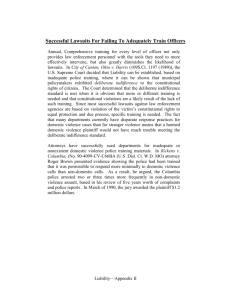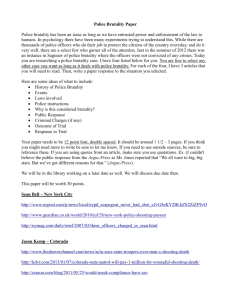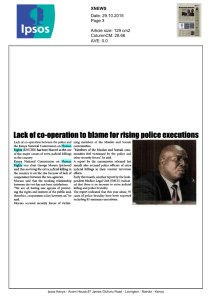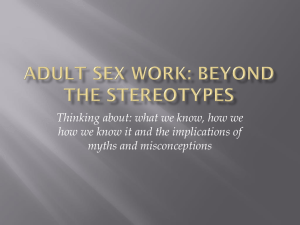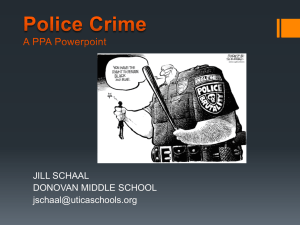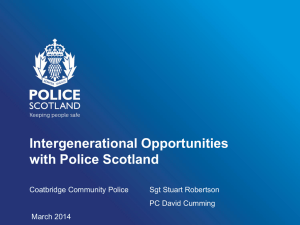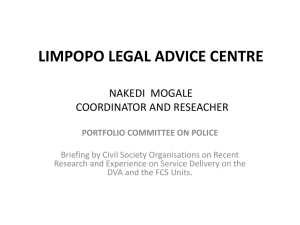Skolnick and Fyfe Chapter 2 - 44-398-PoliceAdmin
advertisement
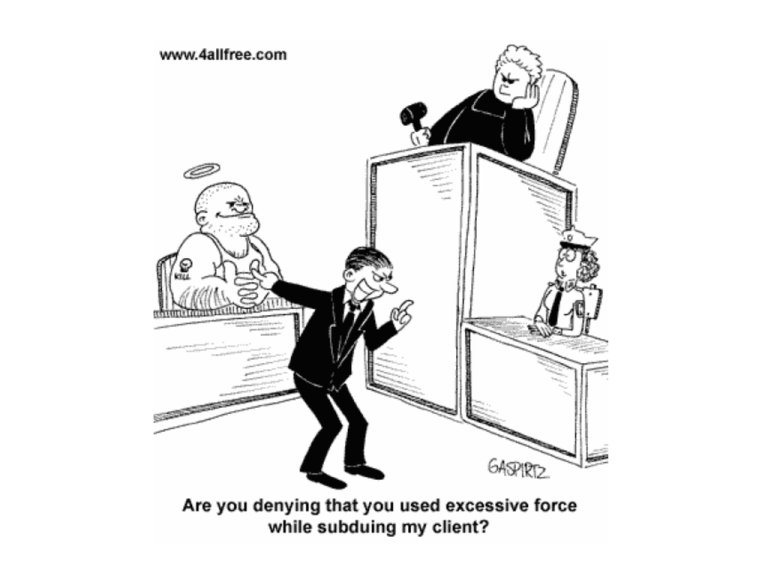
In Chapter 2, the authors call the Rodney King incident : (A) An act of vigilantism (B) A symbolic lynching (C) A wilding (D) An example of the 3rd degree Thesis: Contemporary police brutality is both historically and sociologically related to lynchings. Parallels: Both rely on legal authority to exonerate the extralegal UOF Both respond to perceived threats and fears aroused by outgroups Both regard the legal process as too slow, etc. Both are used to “teach a lesson”. US has a long history of past violence to achieve social control based in racism and nativism. This violence is spurred by groups whose aim has been the preservation of some existing order of social arrangements. All these groups are willing to break the law to achieve their social goal since LE is seen as inadequate and the legal order cannot deal with “the problem”. Emerged from the American frontier, which produced a tradition of self-help Danger/insecurity of newly settled areas brought a crude style of vigilante justice Since there was no organized LE (or what existed was inadequate), volunteer groups filled the gap While necessary, this system set up dangerous precedents: Even when legal order was adequate, people could avoid these to achieve “law and order” (which is a misleading phrase in this context) Private violence came to be used as a means of enforcing a system of social, political, economic, and cultural arrangements against those who were seen as threatening this system San Francisco Vigilance Committee (1851) KKK (1860s and resurgence in the 1920s) NYC draft riots of 1863 Often vigilante and official justice were congruent prior to 1960’s: Police participated in lynchings and other violence Lynchings and executions were often substitutes: people were executed formally or lynch informally (e.g., murderers were executed, rapists were lynched) How does this relate to police brutality? There are inescapable similarities between the motivations of southern police in the first half of the century and the LAPD in the second half Both seek to “teach a lesson” to people who resist police authority and “keep them in their place”. Adolph Archie case Police must use force in their job on occasion Force should be proportional to suspect resistance (UOF continuum) Not all cases where too much force is used should be labeled police brutality or vigilante justice; only a small % fall into this category Some policies can actually encourage force Example: LAPD allowing choke-holds as “control holds” and not deadly force techniques.
